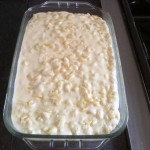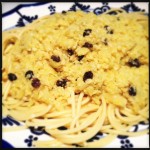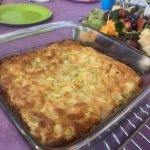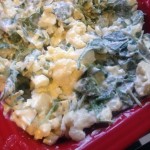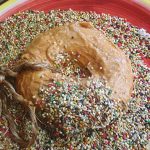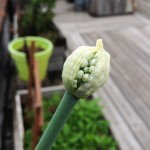by Paula D.
on January 3, 2024 9:46 am in Food / Holiday

In my unending quest to be seasonally appropriate and my yearning to learn how to bake sweets and eat them, I decided it was necessary to make M&M Christmas Cookies.
I wanted chewy cookies (my fav), so I began an internet search. Multiple sources said 2-3 hours of dough refrigeration is needed, adding cornstarch and undercooking creates the perfect soft texture. Chilling the dough for three hours was troublesome considering my column was already past the deadline. With that in mind, I sourced the internet for the fastest, easiest, chewiest, M&M Christmas cookie recipe out there.
But I lost focus, distracted and alarmed by the names of these baking blogs… I Heart Naptime, The Seasoned Mom, Two Peas In A Pod, Dessert for Two, Live Well, Bake Often. It gets “better” – One Happy Housewife, A Diary Of A Real Housewife. What’s a fake housewife? And to make it more cringe, all of the blogs have the same ugly, cookie-cutter template design (pun intended.) The June Cleaver vibe of these sites are disappointing. I thought we moved past the feminine mystique decades ago?
The recipe from I Heart Naptime actually seemed the best, but I just couldn’t, so I decided on another recipe from a blog I can identify with – A Dash Of Sanity.
While my dough was refrigerating for hours, I wondered about the origin of the Christmas cookie. It must go deeper than Santa gluttonously eating housewives’ home-baked cookies. And subsequently getting stuck in chimneys while delivering presents worldwide – in record time – despite getting stuck in chimneys.
Fortunately, there’s more cultural context and as one would assume, we have the Germans to thank for that and for the inception of the cherished Christmas cookie. Weihnachtsplätzchen means “cookie” or “holiday treat.” The cookie is tied to medieval German monasteries where monks used spices like cinnamon and cloves in their baking. The treats gained popularity due to their long shelf life, allowing for advanced baking and storage in the absence of refrigeration. They were easier to transport than cakes or pie and share with townspeople, making them ideal for establishing Christmas cookie traditions worldwide.*
M&M Christmas Cookies
Ingredients:
1 1/2 sticks butter
1 cup brown sugar
1/2 cup sugar
2 eggs
1 tablespoon vanilla
2 cups + 2 tablespoons flour
1/2 teaspoon sea salt
2 tablespoons cornstarch
1 teaspoon baking soda
1 cup red and green M&M’s
Directions:
- Soften butter ahead of time or melt in the microwave.
- In a mixing bowl combine flour, salt, baking soda, and cornstarch. Combine, set aside.
- In a large mixing bowl add butter, brown sugar, and sugar. Cream using a hand mixer for one minute or until completely smooth. Or handmix.
- Beat in eggs and vanilla to butter mixture.
- Add flour mixture to the butter and sugar mixture. Mix well.
- Carefully with the flat part of a knife, crush half the M&M’s, combine. Set the other half, whole M&M’s aside
- Cover dough and set in the refrigerator for at least 1 hour / 3 ideally, or store in the fridge for up to 3 days.
- Preheat the oven to 325 degrees. Scoop dough and place on a baking sheet 2 inches apart. Top with the reminder of M&M’s
- Place in the oven and bake for 10-15 minutes, or until golden brown. Don’t over bake for a chewy cookie! Allow to cool, then eat!
I’m very happy with homemade batch of cookies! They were soft and chewy, I was pleasantly shocked. The flavoring was a bit salty but the mistake made for a nice salty/sweet contrast. I’d definitely recommend this Christmas cookie recipe. Share with your neighbors and share your pictures with me on IG and I will repost – @theglorifiedtomato.

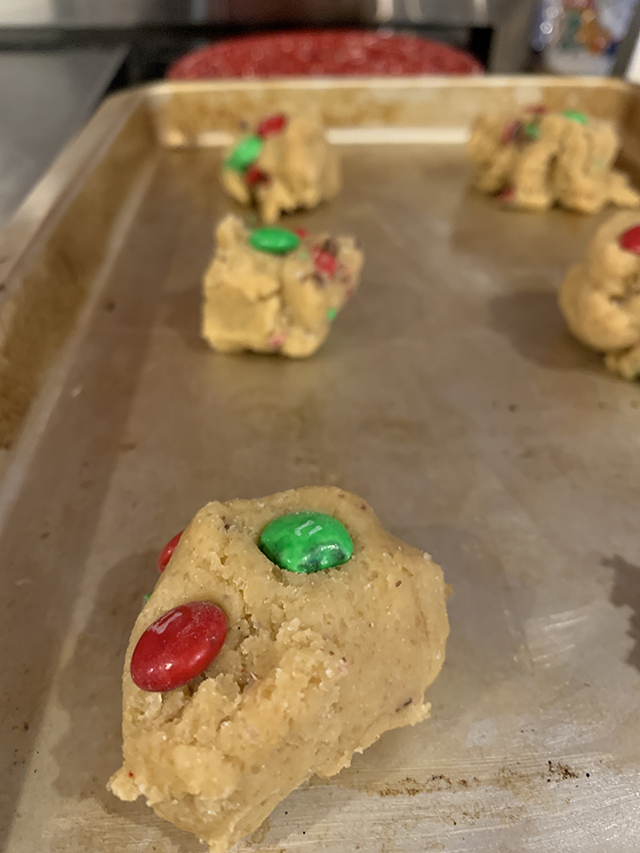
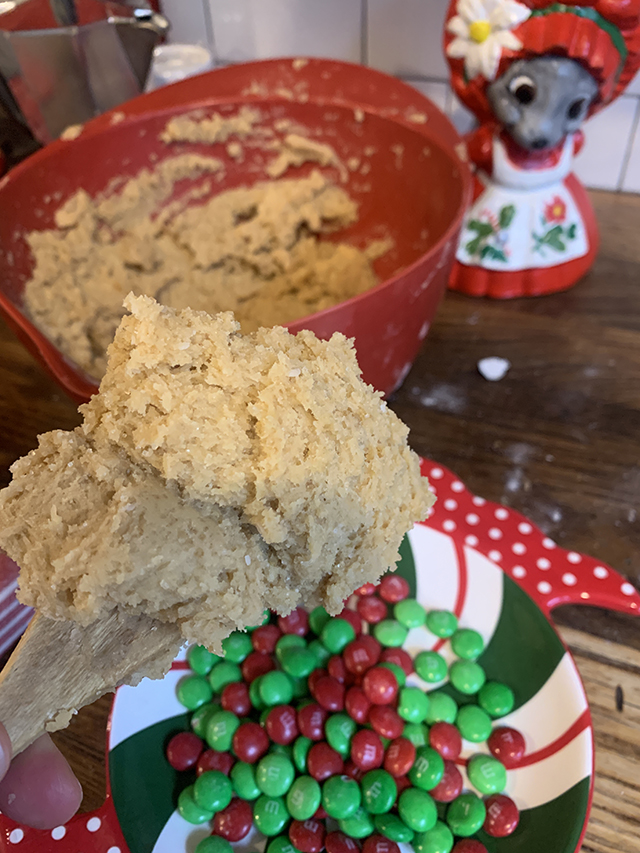
In our close-knit town, nothing goes unnoticed. When wooden flower boxes suddenly adorned the building at the corner of 91st street this summer, my curiosity was piqued. I needed to find out more. I entered through the side door and was greeted by the soothing, soft scent of incense. I smiled when I discovered this was a new brick and mortar boutique, housing beautiful, hand-crafted offerings.
The flower box signaled care and commitment, telling signs, to the larger story…
Last year, Rockaway resident Nicole Dubensky opened Kismet. A cozy shop with a selection of curated maker items – jewelry, stones, candles, ceramics, hand-drawn note cards, purses, and other bespoke items. Jewelry is the focal point of the boutique. The line featured is Sweetpeas & Gypsies, handmade by Nicole. The front-facing space is retail. The back half is Nicole’s silversmith studio where she welds silver and gold, some embellished with stones and all creatively made with intention and devotion. The open layout provides a unique peek into the process of jewelry-making, where you can envision the pieces from inception to showroom.

Kismet is women-owned and operated by Rockaway resident Nicole Dubensky. Support her artistry and our other local businesses on Small Business Saturday, Nov.24.
After Nicole Dubensky completed her studies at SUNY Cortland in 2010, she discovered her passion for silversmithing upon relocating to Puerto Rico. It was a time to reflect on her next steps. Those steps lead her to the shoreline, where she’d comb the beaches collecting shells and sea glass. Nicole found inspiration in the nature surrounding her and in the rich culture of artisans she befriended in Puerto Rico. Nicole began exploring the art of jewelry-making, using the shells and stones she collected from her daily beach walks. Before long, she became consumed by the possibilities of creative expression. During her returns to Rockaway, compliments poured in from friends, family, and colleagues who admired the jewelry she made and wore. In response to the growing interest, Nicole’s life path and vision became clear. It was Kismet.
Join Nicole on Small Business Saturday (Nov. 25) for Kismet’s One Year Anniversary Party and an intimate, personal shopping experience. Products not to miss at this sip and shop event: a new selection of 14k gold jewelry, giftables: local artisan-made candles, knits, soaps, and luxury hair and skin care items. Nicole will be happy to answer questions about her craft and Kismet’s new custom order service for special occasions. Trending now is permanent jewelry. Find out more about that offering on Saturday and sign up for workshops at the studio.
Shopping small is vital to Rockaway’s economic growth. Supporting our independent businesses contributes directly to our neighborhood’s prosperity and maintains our unique and diverse artist culture. Please consider this as you make purchases this holiday season.
Kismet is located at, 90-20 Rockaway Beach Blvd. Shop hours: Thursday- Sunday 11am-6pm. Follow Kismet on Instagram to keep up-to-date on new products and workshops – @kismet_rockaway. Visit the website for more information and online shopping: sweetpeasandgypsies.com.
This recipe popped up on my Instagram feed and I wanted to share it with you. The stuffed Pumpkin is delicious and will be perfect on your Thanksgiving table next week! The rich, nutty cheese flavor infuses with the sweet pumpkin. The cheese melts into the tender pumpkin and forms a creamy texture. I added a hint of hot pepper for a jolt. The result: a warm, tasty comfort food that will serve as an impressive appetizer for your family and friends.
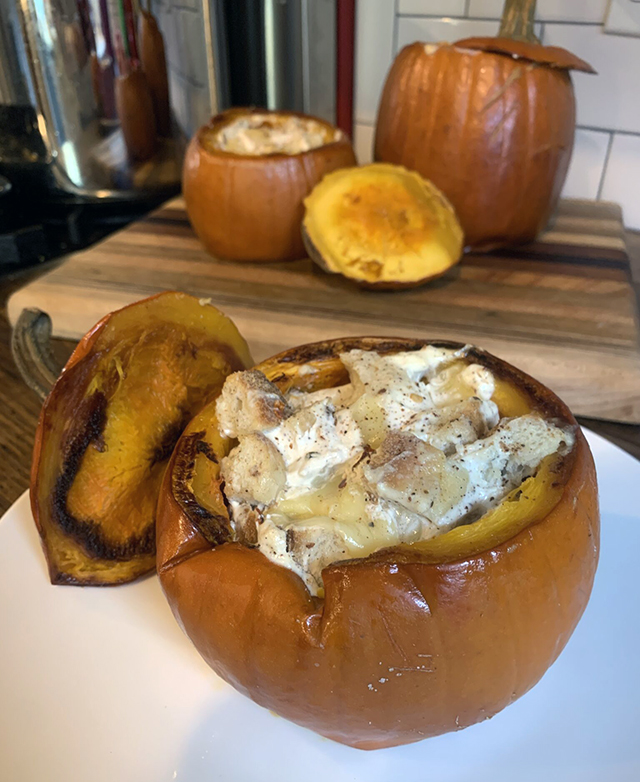
A stunning centerpiece on your Thanksgiving table, the stuffed pumpkin with Alpine cheese is a delicious blend of nutty richness and seasonal warmth.
Which cheeses are alpine? They are a diverse grouping from mountainous regions of Europe. Varieties include gruyère, emmental, comté, taleggio, swiss and raclette. Alpine has a long history dating back centuries, rooted in the traditional practices of alpine communities where cheese-making served as a crucial means of preserving surplus milk. These cheeses are crafted with attention to detail and benefit from the high-altitude alpine vegetation and flora. This creates their distinctive, robust taste – nuttiness, earthiness, and a touch of sweetness.
Ingredients:
Makes 2 stuffed pumpkins
2 sugar pumpkins
½ loaf semolina bread (or preferred bread)
2 cups, cubed alpine cheese
2 tablespoons butter, more for coating pumpkin and baking sheet
1 3/4 cup creme fraiche or substitute with sour cream
1 tablespoon nutmeg
½ tablespoon or more, hot pepper flakes
Salt and fresh ground pepper to taste
FYI Lisena Garden Center (125 Cross Bay Blvd.) has sweet pumpkins for a sweet price!
Directions:
- Preheat the oven to 400 degrees and adjust the oven racks if needed. With a sharp knife, cut the top of the pumpkin off, as if you were making a jack o’lantern. Then scoop out the seeds. Save the seeds for toasting. Salt the inside of the pumpkin. Lightly coat the pumpkin and baking sheet with butter. Roast for 25 minutes.
- In the meantime, cut the cheese and bread into half inch cubes. In a bowl combine the bread, cheese and spices with the creme fraiche, mix.
- Remove the half-baked pumpkins. Keep the oven on. Let the pumpkins cool a little until you can handle them. Stuff the pumpkin and put them back in the oven without tops for 20 minutes or until the cheese is melted. Transfer to a plate and serve hot!
Fall is the best time to hike, walk, spy migratory birds, and embrace the changing leaf landscape. And we don’t have to make a trip up to Hudson to enjoy all that. NYC Parks offers us diverse natural and urban landscapes with endless exploring and learning opportunities. Would you guess we have over 1,700 parks, playgrounds, and recreation areas throughout the five boroughs? I was impressed to read that number.

I’d estimate a few hundred of those green spaces are in Rockaway. It’s fair to say we’ve all noticed the lovely new parks along the boardwalk – the labyrinth, the pickleball court, the adventure course (my favorite), the dog park, the parkway multi-purpose area with a volleyball court, stadium seating, the lawn and what about the new colorfully designed kids playgrounds – all of which are nestled within native gardens, cute seating and picnicking areas.
But there’s a sweet hidden gem a short bike ride away in Edgemere that has slipped through the community collective. Maybe it goes unseen because its perfectly native camouflage meshes seamlessly with the coastline. I’m talking about The Arverne East Nature Preserve. My Insta friend Gordon (a former Park Ranger, oh so cool!) reminded me of the park. We chatted about the lack of press around its opening which happened this past June. I’ve been meaning to “blow it up” in my column so here goes…
The Nature Preserve is an impressive 32 acres of native coastal vegetation with paths for walking and biking. The access points are located off the boardwalk at Beach 44th and Beach 56th streets. You can also enter via Edgemere Avenue at 44th where there is parking (ADA compliant). At this entry, you’ll see a modern building constructed of beautiful vertical wood slats (teak?). This will be a Parks Dept. base and a multi-purpose community center for activities, learning, events, and other purposes. I’m excited to see what happens there and how we as a community can utilize this space.

The paths blend harmoniously with the surrounding nature following the organic shapes of the environment. The material varies from synthetic boards to cement. The boards immediately brought me back to childhood memory – a field trip to Sunken Forest on Fire Island. I believe that is my first vivid memory of being immersed in nature. I remember the feeling of the boards under my feet, the multi-layered sounds of the birds, and the scents of the salt and soil. In Arverne East Preserve you will have a similar sensory experience with the unique addition of the urban world around you.
In the preserve, you will see pitch pines, goldenrod, aster, evening primrose, common marine grasses like bluestem, reed, and more. These plants create a canvas of bright yellow, burnt orange, warm browns, and calming green hues. The vegetation is strategically designed to be a green infrastructure to manage stormwater runoff and support storm projection.

Arverne East Nature Preserve was conceived as a part of the net-zero development in Edgemere which we are now calling Arverne East. The complex will be one of the most environmentally conscious developments in the United States, achieving net zero – meaning human-caused greenhouse gasses are balanced by human-caused carbon dioxide removals over a set time frame. Bravo Rockaway!















